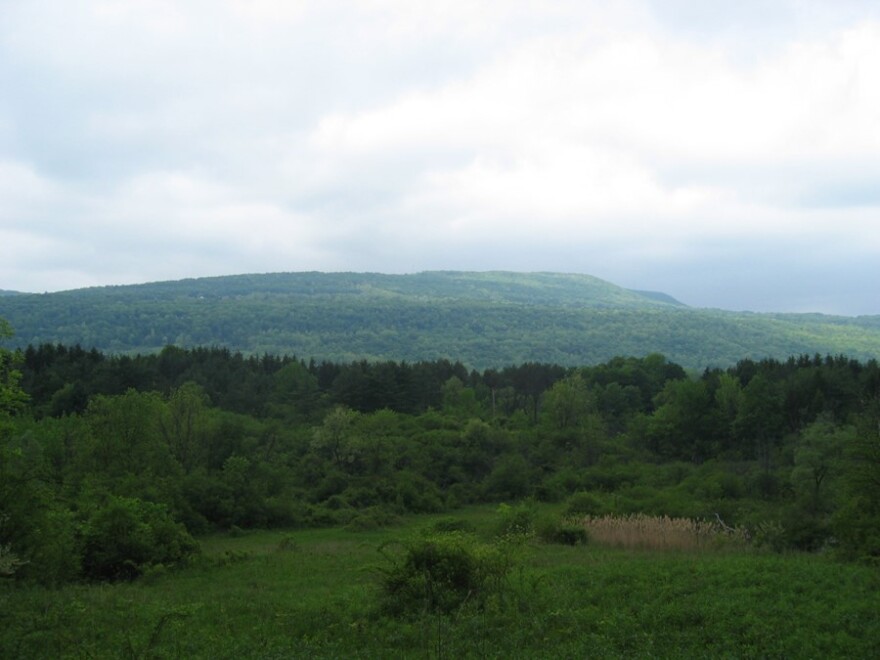The Onondaga Nation once had more than 2.5 million acres that stretched from the Thousand Islands through Central New York and into the Southern Tier. Following years of unjust dispossession, their currently recognized territory was reduced to 7,500 acres. But an agreement between New York State, the United States, and Onondaga Nation governments returns more than 1,000 acres to the Onondaga Nation.
"The Nation can now renew its stewardship obligations to restore these lands and waters and to preserve them for the future generations yet to come. The Nation hopes that this cooperative, government-to-government effort will be another step in healing between themselves and all others who live in this region which has been the homeland of the Onondaga Nation since the dawn of time,” Onondaga Nation Chief Tadodaho Sid Hill said in a statement.
The resolution signed by New York State and the Department of the Interior's Fish and Wildlife Service orders Honeywell to transfer the land the Onondaga Nation. According to a release from the NYSDEC said the Nation will, "restore and manage the property using Traditional Ecological Knowledge (TEK), historical cultural practices, and sound science."
The return of forest lands in the Tully Valley to the Nation is one of the largest land back moments in any state and the first time land was put directly back in the hands of New York's Indigenous people, according to the New York State Department of Environmental Conservation.
This is one of the largest returns of land to Indigenous people by any state and is instrumental in delivering #EnvironmentalJustice - both for the impacts of historical contamination of Onondaga Lake and the recognition of the Nation as the original stewards of these lands.
— NYSDEC (@NYSDEC) June 29, 2022
Attorney for the Onondaga Nation Joe Heath said it’s hard to say how significant this is.
“It’s really a wonderful coming together of governments, recognizing historic harms, and recognizing the potential for healing for all of the people in Central New York to work together, to protect this land, and to bring more territory and water back to the stewardship of the Onondaga Nation,” Heath said.
The agreement comes out of the Onondaga Lake Restoration Plan. The lake and Onondaga Creek are sacred to the Nation and were once rich sites for fishing, hunting, and gathering. However, the ecosystems were badly damaged by years of chemical pollution.
The property includes 980 acres of forest and fields and 45 acres of wetland and floodplains, according to the Department of the Interior. It's currently home to blue heron, songbirds, waterfowl, bald eagles, and other mammals. Heath said returning the land to the Onondaga Nation is an opportunity to restore habitats and waterways.
“These acres contain the headwaters of Onondaga Creek, multiple tributaries that eventually form the main branch and flows north through the mudboils, through the Nation, through the City, to Onondaga Lake. One of the major activities that will go on is the restoration and preservation of the brook trout population so that the people of Onondaga have a place to fish," Heath said.

The resolution includes a conservation easement with the state Department of Environmental Conservation. This provides protection and restoration for the land and allows for some public and education use, including access to Fellows Falls.
Heath said state and federal governments have been better at listening to Indigenous voices over the last decade, and this agreement is a step in the right direction. He hopes this transfer of land back into the hands of the Onondaga Nation inspires more agreements like it.
“Governments are beginning to understand that they have treaty obligations to the Six Nations and to the Onondaga Nation. And that’s a very, very positive development that I’ve seen in the decades that I’ve been fortunate enough to work in this area.”
Heath said the Onondaga Nation along with partners at SUNY-ESF are evaluating the state of the plants, animals, and waterways on the acreage. They’ll soon develop a restoration management plan with Trustees to identify how recreational and public use will work alongside the Nation's re-establishment of cultural practices and ecological habitats.
EDITOR'S NOTE: This story has been updated following the release of additional information from New York State.



